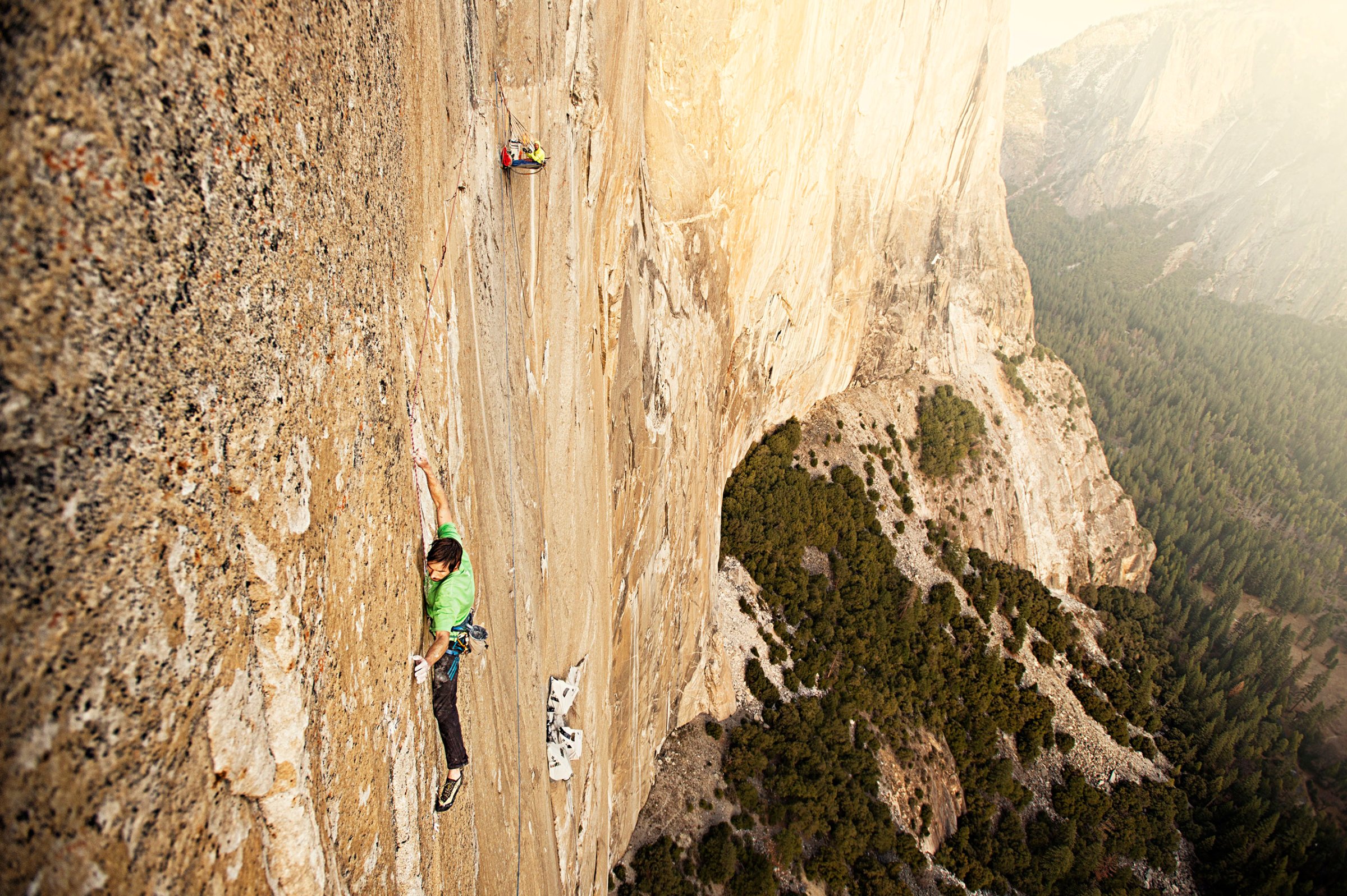
In the almost 50 years since Yosemite National Park’s fabled Dawn Wall was first scaled, no free climber had ever made the ascent. And with good reason: The 3,000-ft.-tall (914 m) granite facade–part of the behemoth El Capitan rock formation–offers barely any grippable crevices. That has made it impossible to climb without support from ropes and gear, let alone with bare hands and rubberized climbing shoes (all that most free climbers use).
On Jan. 14, two men proved it could be done. After nearly three weeks of living–and climbing–off the side of the treacherous slope, American athletes Tommy Caldwell, 36, and Kevin Jorgeson, 30, summited at 3:30 p.m. P.T. In a Jan. 9 Facebook post, Caldwell called the completion a “seven year dream.”
Making history is no easy task. The team’s previous attempts to complete the Dawn Wall–first in 2010, then in 2011, then again in 2013–were ended by bad weather and injuries. And this climb had its own share of setbacks: On Jan. 3, for example, Jorgeson’s fingertips split open after grasping one tiny hold too many, forcing him to rest for several days.
All of which has made both climbers’ milestone even more gratifying. “I’m learning new levels of patience, perseverance and desire,” Jorgeson wrote on Facebook after the Jan. 3 incident. “I’m not giving up. I will rest. I will try again. I will succeed.”
[The following text appears within a diagram. Please see hardcopy or PDF for actual diagram.]
START
DEC. 27
What’s a pitch?
Climbers tackle big walls in sections called pitches, which are often determined by the length of their rope. Pitches are graded on the scale below.
5.0 Easiest
Dawn Wall’s 31 pitches
5.15 Hardest
½ in.
Actual width (1 cm) of some rock holds the climbers gripped with their fingers.
Some holds were so thin, the climbers’ fingers split open; they covered them with tape and glue.
The climbers camped in a hanging tent structure called a portaledge, which was anchored to the rock.
Food, supplies and visitors reached the climbers by way of fixed ropes running from the ground.
DEC. 29
The duo ascended the first nine pitches in two days.
JAN. 1–9
Pitches 11 to 16 were the most technically challenging. Caldwell quickly made it past 16, but Jorgeson was delayed for several days by finger injuries.
8 ft.
JAN. 10
Jorgeson jumped 8 ft. (2 m) horizontally on pitch 16, a move he’d practiced on the side of a shed.
JAN. 13
After Caldwell completed the most difficult pitches, he slowed down to support Jorgeson.
The team usually climbed in the late afternoon and at night to prevent sweaty hands.
JAN. 13–14
Once Jorgeson caught up to Caldwell, the team finished the last nine pitches in two days.
In order to prove that the wall could be free-climbed, the climbers started each pitch over every time they fell.
45 years
Time since the Dawn Wall was first ascended. Until now, no climber has managed to complete the route without rope assistance.
3,000 ft.
Height of summit
FINISH
What happens when they fall?
As free climbers climb, they loop their harness ropes through anchors in the wall, forming protection points. A partner who is safely secured to the wall feeds the climber slack as he ascends. When the climber falls, the partner arrests the rope with a special device that prevents more slack, so the climber drops only as far as his previous protection point.
FOR MORE IMPORTANT MOMENTS IN THE HISTORY OF EL CAPITAN CLIMBING, GO TO time.com/elcapitan
SOURCES: PATAGONIA; CLIMBERS’ SOCIAL-MEDIA ACCOUNTS; CLIMBING.COM; NATIONAL GEOGRAPHIC; NEW YORK TIMES
More Must-Reads from TIME
- Donald Trump Is TIME's 2024 Person of the Year
- Why We Chose Trump as Person of the Year
- Is Intermittent Fasting Good or Bad for You?
- The 100 Must-Read Books of 2024
- The 20 Best Christmas TV Episodes
- Column: If Optimism Feels Ridiculous Now, Try Hope
- The Future of Climate Action Is Trade Policy
- Merle Bombardieri Is Helping People Make the Baby Decision
Contact us at letters@time.com